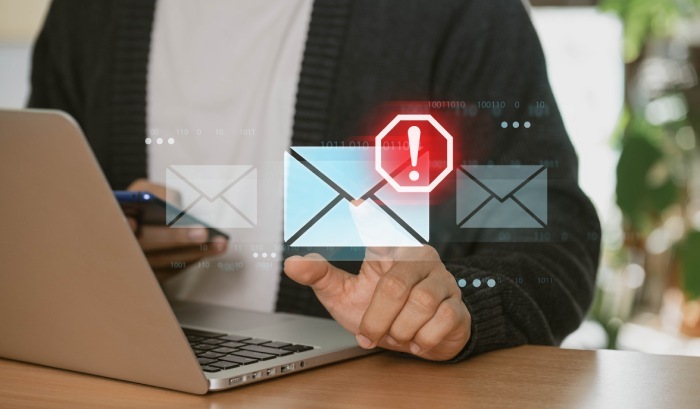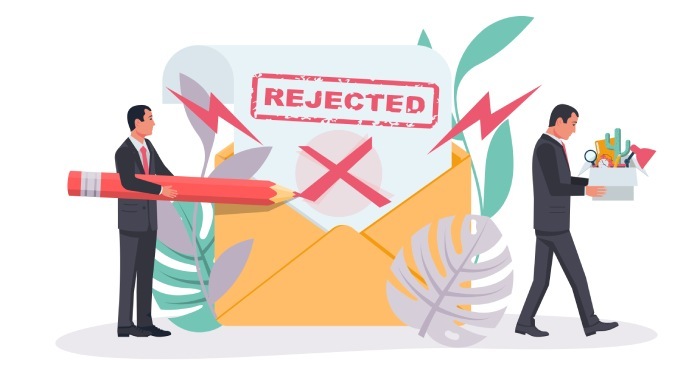Gmail enforcement norms for non-compliant emails: What’s new in 2025?
Email-based cyberattacks have become so severe and rampant that you can no longer afford to make email security an afterthought. Attackers out there are ready to seize even the most seemingly insignificant vulnerabilities at every chance they get. If your outgoing emails are not protected with email authentication protocols like SPF, DKIM, and DMARC, you are essentially making it easier for attackers to steal your confidential data, deceive your customers, and install malware on their systems.
Apart from exposing your domain to attacks and putting your clients at risk, not authenticating your domain with these protocols also means you make it harder for the Email Service Providers (ESPs) to trust you.
Gmail’s latest enforcement norms no longer let non-compliant messages in with a warning; they delay them or outright reject them. That means earlier, you could get away with partially complying with the Gmail sender requirements, but now, soft enforcement will no longer give you an easy way in.
Let’s dig deeper and understand what this means for your organization and how you can keep up with these new norms.
Understanding the shift from warnings to rejection
Back in 2024, when Google (along with Yahoo) released its first set of email sender requirements, the primary goal was to get businesses and bulk email senders to start fixing their authentication setup and recognize the potential of these protocols in defending against phishing, spoofing, and other email threats.
Back then, Gmail would flag issues, show warnings, or send your messages to spam if something was wrong, giving senders enough time to fix their authentication setup or make necessary changes like adding a mandatory unsubscribe button. The idea was to guide senders toward better practices without disrupting their email delivery too aggressively.
But now in 2025, things have changed. Cyberattackers have evolved. This means there is no room for gentle reminders or a relaxed approach.
So starting in November this year, if your outgoing emails do not comply with Gmail’s sender practices, the mail server will no longer let them pass without a warning. It will either delay their delivery or reject them outright.
What’s new about Gmail’s 2025 enforcement policy
Gmail has changed the way it verifies incoming emails, and it is anything but forgiving. Even if your authentication setup has a minor issue, such as a misalignment, a missing record, or an outdated setting, it can cause Gmail to stop the message before it reaches the inbox.
The focus has shifted from educating senders to blocking non-compliant emails.
Here’s what Gmail’s new sender requirements look like in 2025:
SPF and DKIM must match your “From” domain
Gmail wants to be sure the email really belongs to your domain. If they don’t match, Gmail may temporarily warn you or reject the email completely with a 5.7.26 error.
You must have a DMARC policy in place
It is important that you publish a DMARC record for every sending domain in your email ecosystem. To start, even the most basic policy (p=none) can be acceptable, but eventually you should move towards a stricter policy, p=quarantine or p=reject. If you fail to comply with it, you might receive a temporary warning, or your message might even get blocked.
TLS Encryption must be enabled
Gmail now requires all emails to be sent over TLS. If your emails are encrypted, Gmail can safely deliver them because the connection between mail servers is secure. But if TLS is missing or not set up correctly, Gmail sees the message as unsafe and blocks it with the 550 5.7.29 error code.
Valid DNS and Reverse DNS (PTR) records
As per the new sender requirements, your sending server must have proper forward and reverse DNS (PTR) records. This means that your sending IP address should point to a real hostname, and that hostname should point back to the same IP. If this doesn’t match, Gmail can’t confirm who you are, and it treats your email as unsafe. When that happens, Gmail blocks the message with the 550 5.7.25 error code.
One-click unsubscribe is mandatory
If you send bulk emails regularly, it is important that you give your recipients the option to opt out, which is why Gmail has made it mandatory to include a one-click unsubscribe link in your emails. And if the users choose to unsubscribe, their request must be processed within two business days. If you fail to do so, your email might be marked as spam when it reaches the recipient.
Low spam complaint rate
Gmail now closely monitors how your recipients perceive your emails and how many of them mark your email as spam. To stay within the safe range, your spam complaint rate should be below 0.3%, and ideally under 0.1%. If too many recipients flag your messages, Gmail assumes your emails are unwanted or unsafe and may start blocking them, resulting in the 5.7.28 error code.
Preparing for Gmail’s new email sending norms
Complying with Gmail’s latest email-sending requirements shouldn’t be an afterthought, especially if you want your emails to reach the recipients. To prepare for it, start by ensuring SPF, DKIM, and DMARC records are properly configured for every domain you use. You should also check that your server uses TLS and that your DNS and PTR records are valid.
Moreover, you must keep the mailing list clean by removing inactive or incorrect email addresses and sending messages only to people who want to hear from you. Keep your spam complaints low, and always include a working one-click unsubscribe link. These simple steps will ensure that your emails reach exactly where they are supposed to— the recipients’ inboxes.
This shift towards a stricter approach is a much-needed step to keep users safe from ever-evolving email threats. All it takes is consistent effort and attention to detail to stay compliant with these norms. If you are still unsure about how to meet these requirements, get in touch with us today!




